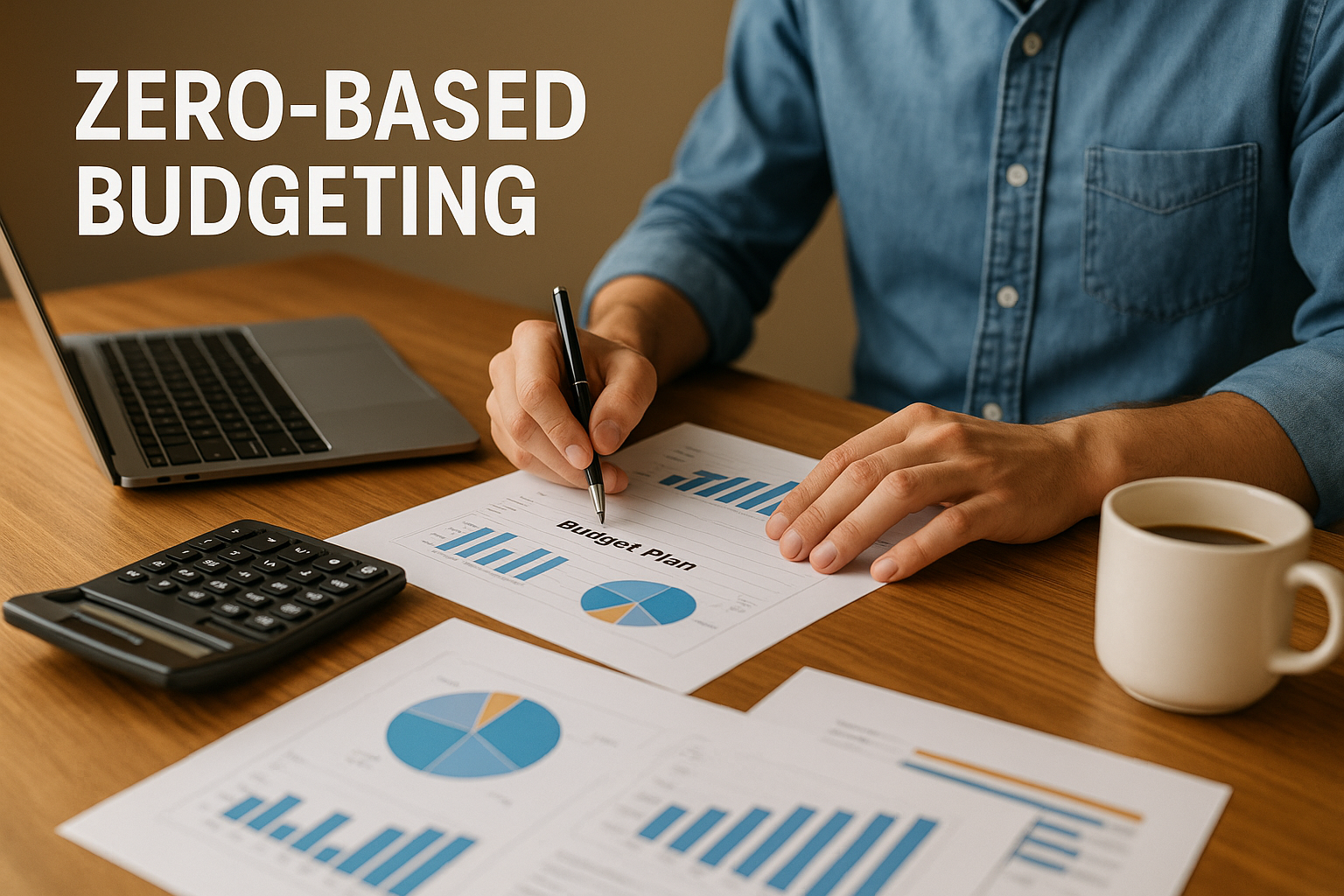How to create a budget in 2025 , mastering how to create a budget is more important than ever. With the ever-changing economic landscape, rising living costs, and unpredictable expenses, personal finance strategies are a must for staying financially afloat. But how do you create a budget that works in 2025, one that is both realistic and sustainable?
In this post, we’ll cover the essential tips and techniques for crafting a monthly budget plan that fits your lifestyle and goals. From understanding the best to discovering the budgeting tools that will keep you on track, we’ll walk you through everything you need to know to make budgeting a simple, stress-free process.
Why Is How to create a budget in 2025?
Budgeting is more than just tracking your spending. It’s about aligning your financial planning with your life goals, whether that’s saving for a vacation, paying off debt, or simply managing your daily expenses. In 2025, it’s crucial to have a system in place that not only tracks your spending but helps you build financial security for the future.
A well-thought-out budget offers clarity, control, and confidence. It ensures that you are not only covering your essential needs but also planning for your future with realistic steps. But the challenge is creating a budget that is both achievable and flexible enough to adjust to life’s curveballs. Let’s dive into the practical steps on how to create a budget that works in 2025.
Step 1: Understand Your Income and Expenses
Before you can make a monthly budget plan, you need to get clear on your income and expenses. Knowing where your money is coming from and where it’s going is the first step to building a budget that works.
List Your Sources of Income
Start by listing all your sources of income. This may include your salary, freelance work, side jobs, or passive income. Be sure to calculate your net income (what you actually take home after taxes) because that’s the amount you have to work with.
Track Your Expenses
Next, list all your monthly expenses. It’s crucial to track both fixed expenses (like rent, utilities, subscriptions) and variable expenses (such as groceries, entertainment, and discretionary spending). Be as detailed as possible, and consider using a budgeting tool for 2025 to help you categorize and track your spending.
Common expenses to include:
Housing: Rent or mortgage
Utilities: Electricity, water, internet
Debt: Credit card payments, student loans
Groceries: Food and household items
Transportation: Gas, public transportation, car insurance
Entertainment: Movies, eating out, subscriptions
Savings & Investments: Retirement funds, emergency savings
Real-Life Example
Let’s take Sarah, a 30-year-old marketing professional. She makes $3,500 per month after taxes. Her fixed expenses include $1,200 for rent, $100 for internet, and $150 for her car payment. Her variable expenses average $300 for groceries and $200 for entertainment. Her total monthly expenses come to $2,950, leaving her with $550 each month to save or invest.
Step 2: Set Financial Goals
What do you want to achieve with your budget? Maybe you’re planning for a vacation, saving for a house down payment, or simply trying to pay off credit card debt. Setting clear financial goals will help you stay motivated and focused.
Short-Term vs. Long-Term Goals
Short-Term Goals: These might include paying off a credit card balance or saving for an emergency fund. These goals are usually achievable within 1-2 years.
Long-Term Goals: These could involve retirement planning or saving for a down payment on a house. These goals require patience and consistent savings over a longer period of time.
Example: Setting Realistic Goals
Sarah’s financial goals are to pay off her credit card debt ($2,000) within the next 6 months and build an emergency fund of $3,000 over the next year.
She’s committed to putting aside $250 per month for her debt repayment and $200 for savings. This allocation is achievable with her current income and expenses.
Step 3: Choose the Best Budgeting Method for You
There are many different budgeting methods to choose from in 2025. The key is to pick one that suits your financial situation and personality. Here are some popular budgeting strategies:
1. The 50/30/20 Rule
This method divides your income into three categories:
50% for necessities (housing, bills, groceries)
30% for discretionary spending (entertainment, dining out, shopping)
20% for savings and debt repayment
2. Zero-Based Budgeting
With this method, every dollar you earn is assigned a specific role. At the end of the month, your budget should “balance out” to zero. This method forces you to prioritize every dollar and eliminate unnecessary spending.
3. Envelope System
In this cash-based system, you allocate a certain amount of cash to various spending categories (groceries, entertainment, etc.). Once the cash is gone, you can’t spend any more in that category for the month. This is a great method for controlling spending and avoiding overspending.
4. The Pay-Yourself-First Method
This strategy focuses on savings. You allocate a portion of your income to savings or debt repayment before paying for any expenses. This ensures that you prioritize your future financial well-being.
Step 4: Track Your Spending and Adjust
Tracking your spending is essential for sticking to your monthly budget plan. Whether you use a budgeting app, spreadsheet, or pen-and-paper method, consistency is key.
Budgeting Tools for 2025
Some of the best budgeting tools for 2025 include:
Mint: Automatically tracks your expenses and categorizes them for you.
YNAB (You Need a Budget): Focuses on zero-based budgeting and helps you allocate every dollar to a specific purpose.
EveryDollar: A simple, easy-to-use tool for planning and tracking your budget.
GoodBudget: A digital envelope system for cash-based budgeting.
These tools are designed to make realistic budgeting easier by giving you a clear picture of where your money is going and helping you stick to your financial goals.
Step 5: Stick to Your Budget
Now comes the hard part—sticking to your budget. Financial planning for beginners can be overwhelming, but with discipline and a few strategies, it’s possible to stay on track.
Tips for Sticking to Your Budget
Automate Savings: Set up automatic transfers to your savings or investment accounts so you’re not tempted to spend that money.
Review Weekly: Regularly check in with your budget to see if you’re on track or need to make adjustments.
Adjust for Changes: Life is unpredictable. If your income or expenses change, adjust your budget accordingly.
Account for Fun: Allow yourself some room for enjoyment—having a little wiggle room in your budget will make it easier to stick with long-term.
Real-Life Example: How Sarah Sticks to Her Budget
Sarah reviews her budget every Sunday evening, making sure she’s on track with her savings and debt goals. When she goes out with friends, she uses the envelope system to ensure she doesn’t overspend on entertainment.
FAQs About Budgeting in 2025
1. How do I create a budget that works in 2025?
Focus on understanding your income and expenses, setting realistic goals, and choosing a budgeting method that fits your lifestyle. Track your spending and adjust as needed.
2. What are the best budgeting methods for beginners in 2025?
The 50/30/20 rule and zero-based budgeting are great starting points for beginners. Both methods offer simplicity and flexibility.
3. How can I stick to a monthly budget?
Automate your savings, review your budget regularly, and make adjustments when necessary. Don’t forget to build in room for enjoyment!
4. What are some budgeting strategies to save more money?
Track your spending, set up a spending limit for each category, use budgeting tools, and prioritize savings and debt repayment.
5. How can I make a realistic budget I can follow?
Be honest about your income and expenses, set achievable goals, and choose a budgeting method that works with your lifestyle. Flexibility is key!
Conclusion
Budgeting doesn’t have to be a daunting task. With the right strategies, tools, and mindset, you can create a budget that works in 2025 and beyond. Whether you’re a beginner or a seasoned pro, these budget planning tips will help you take control of your finances and work toward your financial goals. By following these steps and regularly tracking your expenses, you’ll build a solid foundation for long-term financial success.








Comments (0)